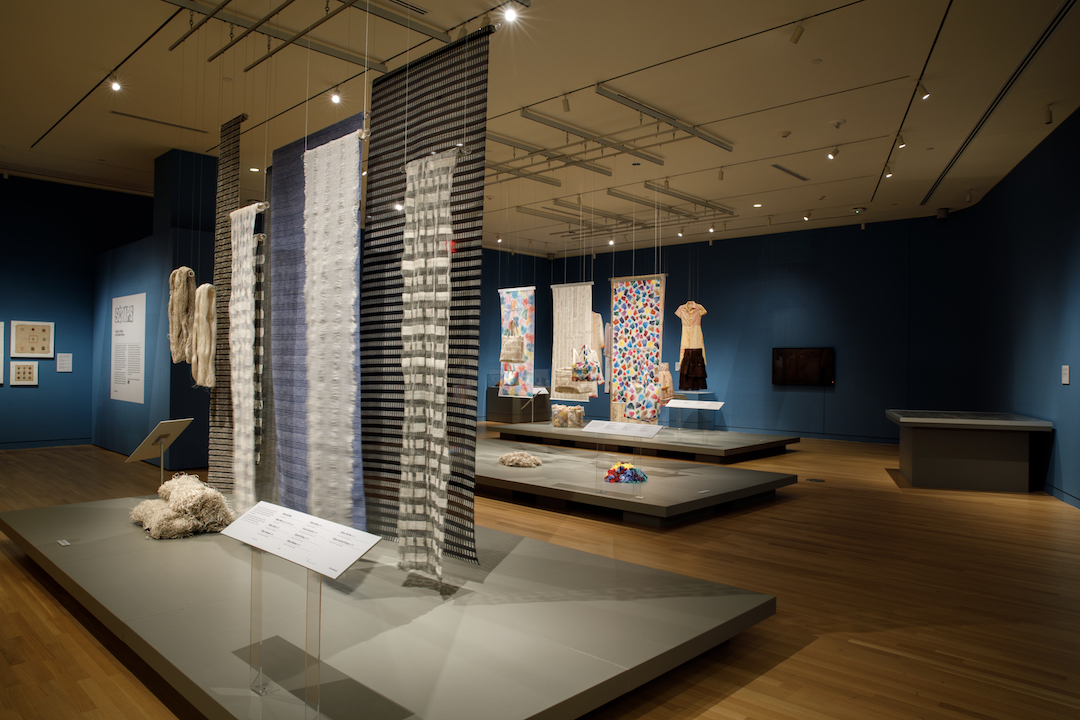Can art fit in a small, shallow box?
That’s the question Los Angeles collector Lloyd Cotsen, a philanthropist and former CEO of Neutrogena, proposed to 36 acclaimed international artists, who created work that appears in the George Washington University Museum and The Textile Museum’s new exhibition, “The Box Project: Uncommon Threads.” The show includes pieces by well-known artists such as Richard Tuttle, Cynthia Schira and Gyöngy Laky.
George Washington Today spoke with Camille Ann Brewer, curator of contemporary art at the George Washington University Museum and The Textile Museum, and discussed the project and how it inspired creative and ingenious approaches to using fiber and textiles.
Q: What was the challenge Los Angeles collector Lloyd Cotsen proposed to artists for this exhibition?
A: This exhibition includes widely divergent commissioned works produced by 36 artists between 2004 and 2013. The works were made in response to a challenge issued by collector Lloyd Cotsen and his textile curator, Mary Hunt Kahlenberg, who stipulated that each artist must submit three-dimensional works sized to fit inside a relatively small square or rectangular box of standardized dimensions.
In setting these parameters, Mr. Cotsen and Ms. Kahlenberg presented the artists with a creative problem that would encourage them to broaden the scope of their studio practices. They wanted them, in effect, to “think outside of the box” by forcing them to work within it. The variety of solutions that resulted and the range of materials and techniques used by the artists speak to the project’s successful outcome.
They were also asked to create something with fiber, broadly defined, and the materials used include plastic tubing, copper wire, paper, manzanita wood, zippers, buttons, beads, magnets, reflective tape, rubber sponges and spools of thread.
Q: Can you describe some of the artists who took on the challenge?
A: The artists were selected in five subgroups: American Masters; Fiber Artists of Japan; International Innovators; Fiber and Beyond: Artists, Makers, Friends; and Contemporary American Fiber Artists.
All of the artists who were asked to participate in the project accepted the challenge, including Richard Tuttle, an influential contemporary conceptual sculptor. Some of the artists viewed the box as a container for the artwork, while other artists saw the box as an integral part of the final artwork itself.
Q: How did the scale of these small boxes change the approach to curating the show?
A: The exhibition was curated by Lyssa C. Stapleton, curator of the Costen Collection, and Bruce W. Pepich, director and curator of collections at the Racine Art Museum in Wisconsin. The curators added other objects to demonstrate the artists’ normal scale and scope of work. This adds variety to the exhibition and complements the Box Project works.
Q: How does the show complement the current “Scraps” exhibition?
A: In many cases, Box Project artists reused materials for the creation of their art works. John Garrett is a good example of an artist who repurposes discarded materials into his assembled fiber works.
Q: How did the idea of constraint and restriction inspire creativity in this show?
A: For many of the artists in the exhibition, scaling down an idea to work within a small box format was challenging. One of the artists, Cynthia Schira, stated in an interview, “I had never worked within someone else's parameters.... The challenge was trying to fit my work into the project, knowing my piece was going to be part of a collection, one of many, and that each one was going to different.”
“The Box Project” will be on view through Jan. 29. Visitors can attend activities tied to the exhibition, including an artist talk with Richard Tuttle on Oct. 18, a make-your-own-art-box workshop on Oct. 19 and a family festival on Oct. 21. Check out more events here.



